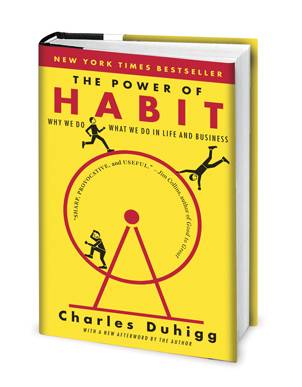How do you create a culture or otherwise encourage people to work in networked, collaborative ways? I have recently been asking a variety of social change leaders this question, in a series of interviews as part of putting together a field guide on collaborative networks with the Garfield Foundation’s new Collaborative Networks Initiative. A theme that has come up repeatedly is the importance of modeling behaviors. Actions speak louder than words. Or you could say a picture is worth a thousand words and direct experience is worth a thousand pictures.
For example, when I first got to know my colleague Curtis Ogden of Interaction Institute for Social Change (IISC,) who does quite similar work to me, we had great conversations about ideas, books, and other tools for working on networks for social change. Curtis blogs regularly and I was struck how he gave credit to me and linked to the New Directions web site whenever he wrote about things he learned from me. For example, he wrote this blog about Lauren Chase-Rowell, a friend/teacher of mine and this one describing work we were doing together. He invited me to post this guest blog on the IISC site. One could look at us as competitors, where it makes sense to be guarded about sharing our ideas, instead Curtis modeled this ethic of generous exchange: by thoughtfully giving credit, providing links for others to learn about me and my work/interests, and sharing/building on each others’ ideas and experiences.
Here comes the contagious part. I appreciated this quality so I picked up the habit and mentioned Curtis with a link in a number of my blogs, for example, in this blog where you see our work building off each other. (If you search his name on our site or mine on his you can see how often we are exchanging ideas and links.) It also became a habit that when I talk with clients, I give credit to those I have learned from, e.g., when sharing stories of initiatives I admire, referencing my teachers, and making a point to put “Source: [ name ]” on slides where I am drawing on others’ ideas or inspiration. In collaborating with Ruth Rominger of the Garfield Foundation on a webinar last summer, she noticed this habit and commented on how she appreciated it…and I gave credit back to Curtis who I learned it from. I believe she has now picked it up.
 This practice of generously giving credit and encouraging open exchange of ideas is an example of a habit that can have ripple effects – it models a different ethic that supports collaboration in a much richer way. In a conversation about modeling behaviors recently with Eugene Kim, he referenced the work of Charles Duhigg in the book The Power of Habit. Duhigg writes about “keystone habits” – essentially some habits matter more than others – keystone habits have the power to start a chain reaction, changing other habits as they move through an organization or system. They start a process that can start to shift, dislodge, and remake other patterns.
This practice of generously giving credit and encouraging open exchange of ideas is an example of a habit that can have ripple effects – it models a different ethic that supports collaboration in a much richer way. In a conversation about modeling behaviors recently with Eugene Kim, he referenced the work of Charles Duhigg in the book The Power of Habit. Duhigg writes about “keystone habits” – essentially some habits matter more than others – keystone habits have the power to start a chain reaction, changing other habits as they move through an organization or system. They start a process that can start to shift, dislodge, and remake other patterns.
My strategic question became: What is a keystone habit or behavior that we could each adopt that will create a culture of collaborative learning and working in networked ways? (This could be a fruitful small group brainstorm for a collaborative network to do.)
If I had to pick one habit, I would pick the practice of asking strategic questions – questions we don’t know the answer to, that help distill the collective wisdom of a group, that challenge assumptions, or that enable reflective learning. My colleague Nancy Gabriel’s choice was reflective conversations – a practice of focusing on the data/facts and then articulating one’s thinking and assumptions, e.g., using the Ladder of Inference. This habit encourages clarity of thinking, a greater understanding of ours and others’ perspectives, and is fundamental to engaging across difference skillfully.
Here are some of other suggestions for keystone habits I have received to this in recent interviews:
- “Taking notes from conversations and group work and sharing them so everyone can see and learn from the group’s work.” – Eugene Kim
- “Smiling – think about when you are frowning and how this negativity clamps down and puts a lid on everything, it closes communication. When people smile, they are more open, this sends a signal and exhibits to others that you are extending a hand, extending a welcome and openness to ideas.” – Ina Anderson, MA Smart Growth Alliance
- “Model the “we” by changing external communications. In the Northern Forest Alliance, every organization had its own magazine, where they would typically promote what they did. Through work with the Alliance, all of the members changed the tone of their publications to focus on what we did together, what was accomplished by working together with many partners. This was a useful lever to get people to shift their world view.” – Andi Colnes, Energy Action Network Vermont
- “Using the practice of “yes and” to respond to others ideas, essentially building on them versus saying “no” or “but”. – Ruth Rominger, Garfield Foundation
What are your suggestions for a keystone habit? Comments welcome.
